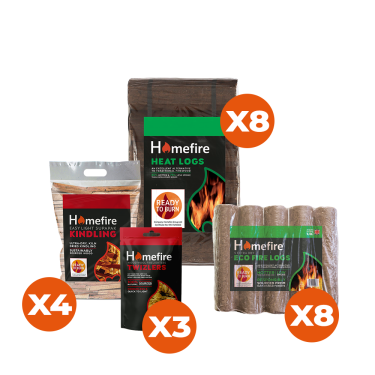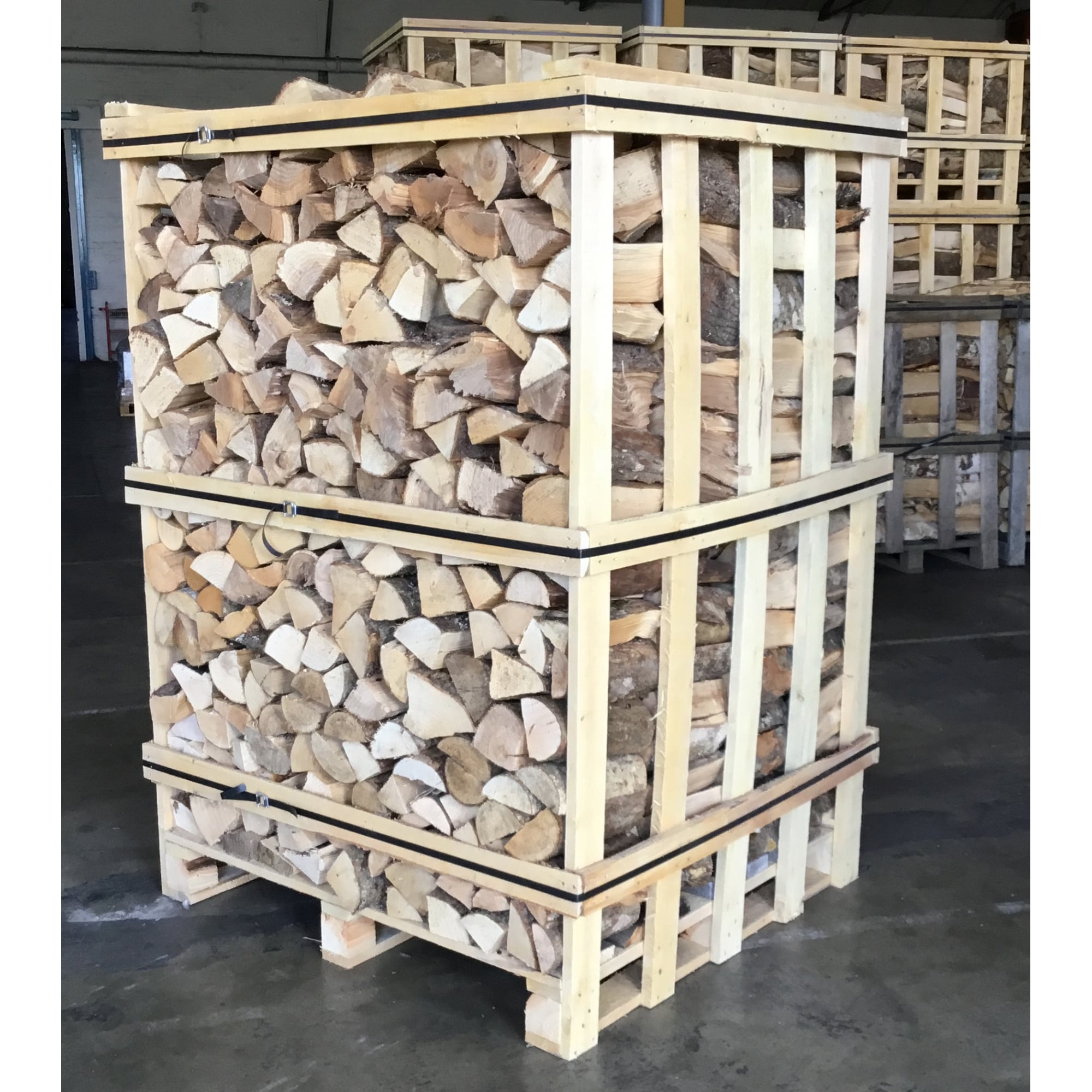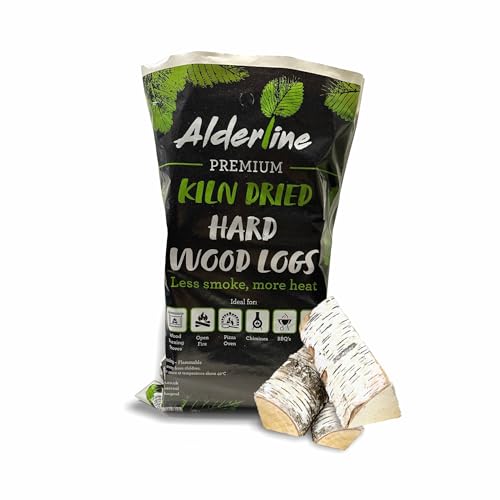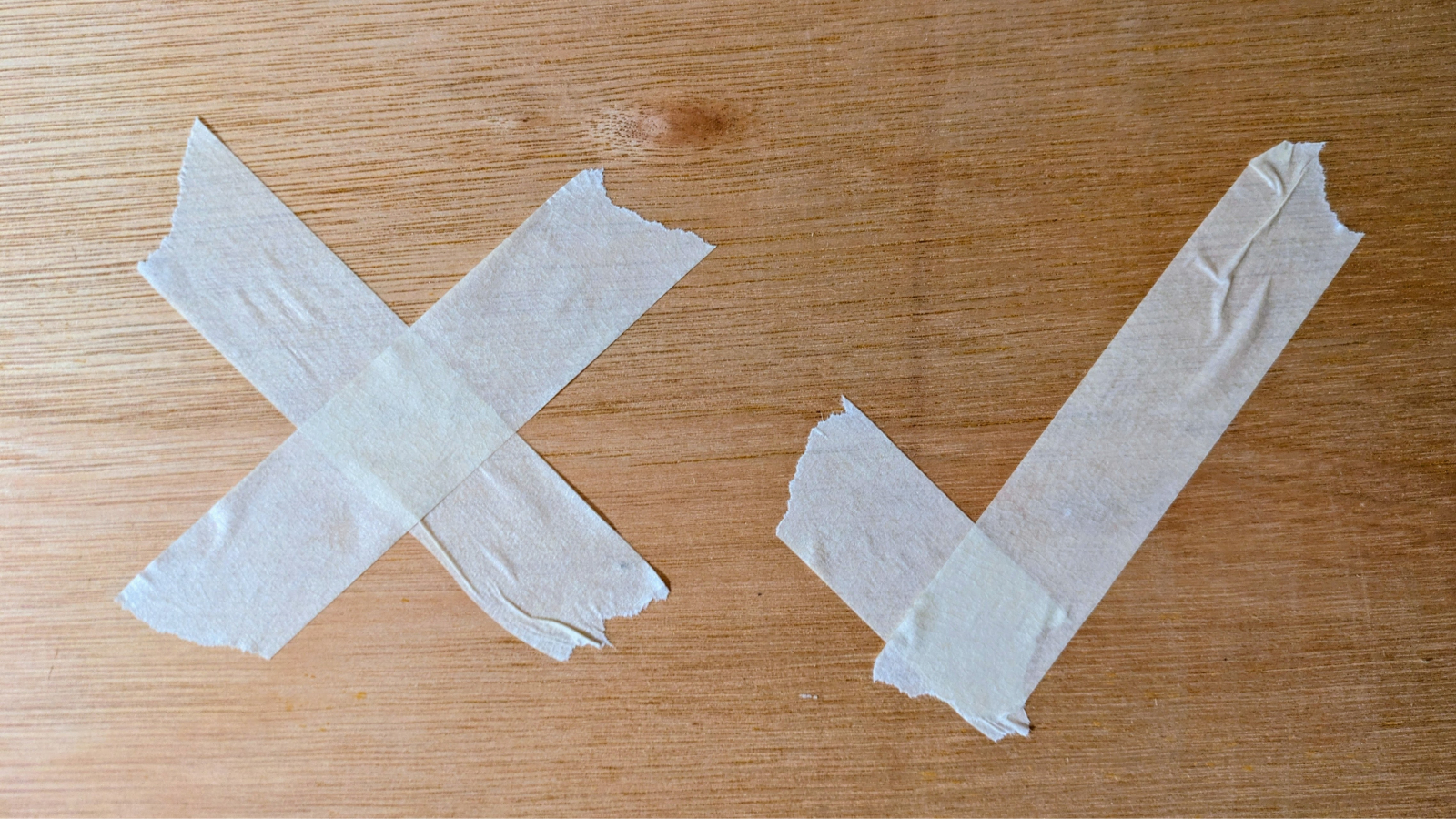Thinking of installing a log burner? Here's everything you need to know
Installing a log burner can add warmth and style to your surroundings. We take a look at what you need to consider when choosing one for your home
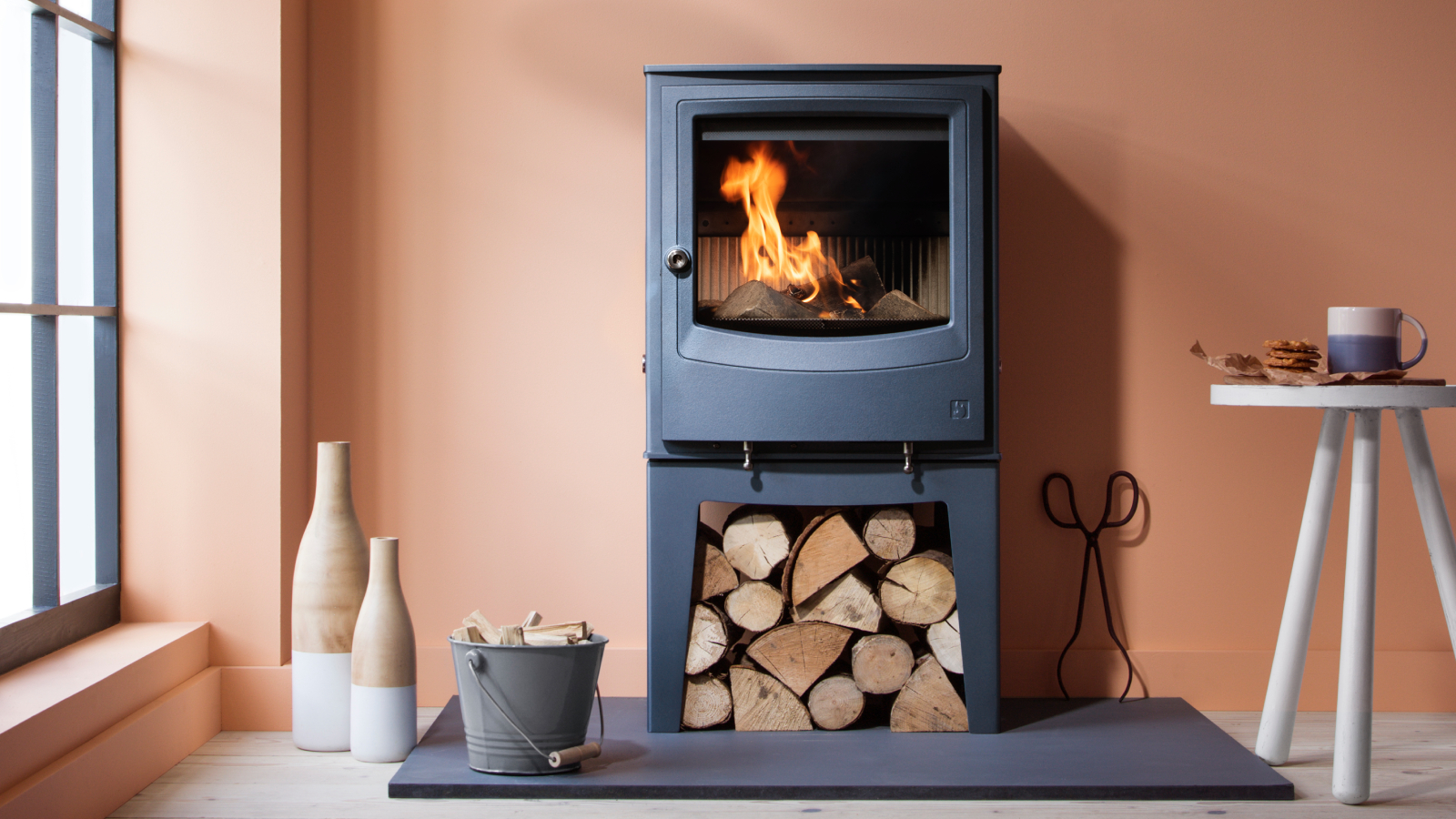
If you're considering a log burner as an addition to your home, you might be wondering just what's involved. Is installing a log burner possible in any home and how do you decide which one is right for you?
The reality is that it isn't just a case of picking one off the shelf and bringing it home. As well as determining what size log burner you need, you'll also need to take into account matters such as ventilation, flues and finding the right person for installing a log burner.
In this guide to installing a log burner we'll take you through the steps you need to take both to choose the right type and model for your heating needs, as well as getting it up and running safely in line with the necessary guidelines.
Installing a log burner starts with practical considerations
While you may have spent time researching log burner ideas, deciding which one to buy really needs to start with the practical considerations in order to help you understand what's involved with installing a log burner, says Erica Malkin, communications manager for the Stove Industry Association (SIA).
"With such a wide range of stove designs available, ticking off the practical considerations first can help narrow your search. The top two are the size of the room you wish to heat and whether you live in a smoke control area (SCA)."
Why do these both matter? They will determine everything about the type of log burner you choose, how you go about installing a log burner in your home and here's why.

Erica Malkin is the communications manager for the Stove Industry Association (SIA). With over 25 years of communications experience, including 19 in the fireplace and stove sector, her role is focused on addressing misconceptions around the use of wood-burning stoves and promoting their benefits as highly efficient, sustainable and low-carbon heating appliances.
Fuel considerations
Establishing if you live in a Smoke Control Area (SCA) is perhaps the first and most important step to take when installing a log burner.
Bring your dream home to life with expert advice, how to guides and design inspiration. Sign up for our newsletter and get two free tickets to a Homebuilding & Renovating Show near you.
"Many areas of the UK are covered by Smoke Control Area legislation," explains Erica Malkin, "and in those areas, you can only burn wood if you use a Defra exempt appliance."
So what can and can't you do in an SCA? According to the government website:
"Many parts of the UK are smoke control areas where:you cannot release smoke from a chimney. You can only burn authorised fuel, unless you use an appliance approved by Defra (also known as an ‘exempt appliance’ or ‘Defra approved appliance’).
"In a smoke control area you can only burn fuel on the list of authorised fuels, or any of the following ‘smokeless’ fuels, unless you’re using a Defra approved appliance: anthracite, semi-anthracite, gas, low volatile steam coal."
However, that doesn't mean you can't install a log burner. As long as you buy an EcoDesign stove, that is a Defra approved appliance, burn wood marked with the 'Ready to Burn' certification and avoid burning wet wood, you can enjoy the added warmth one will bring to your home.
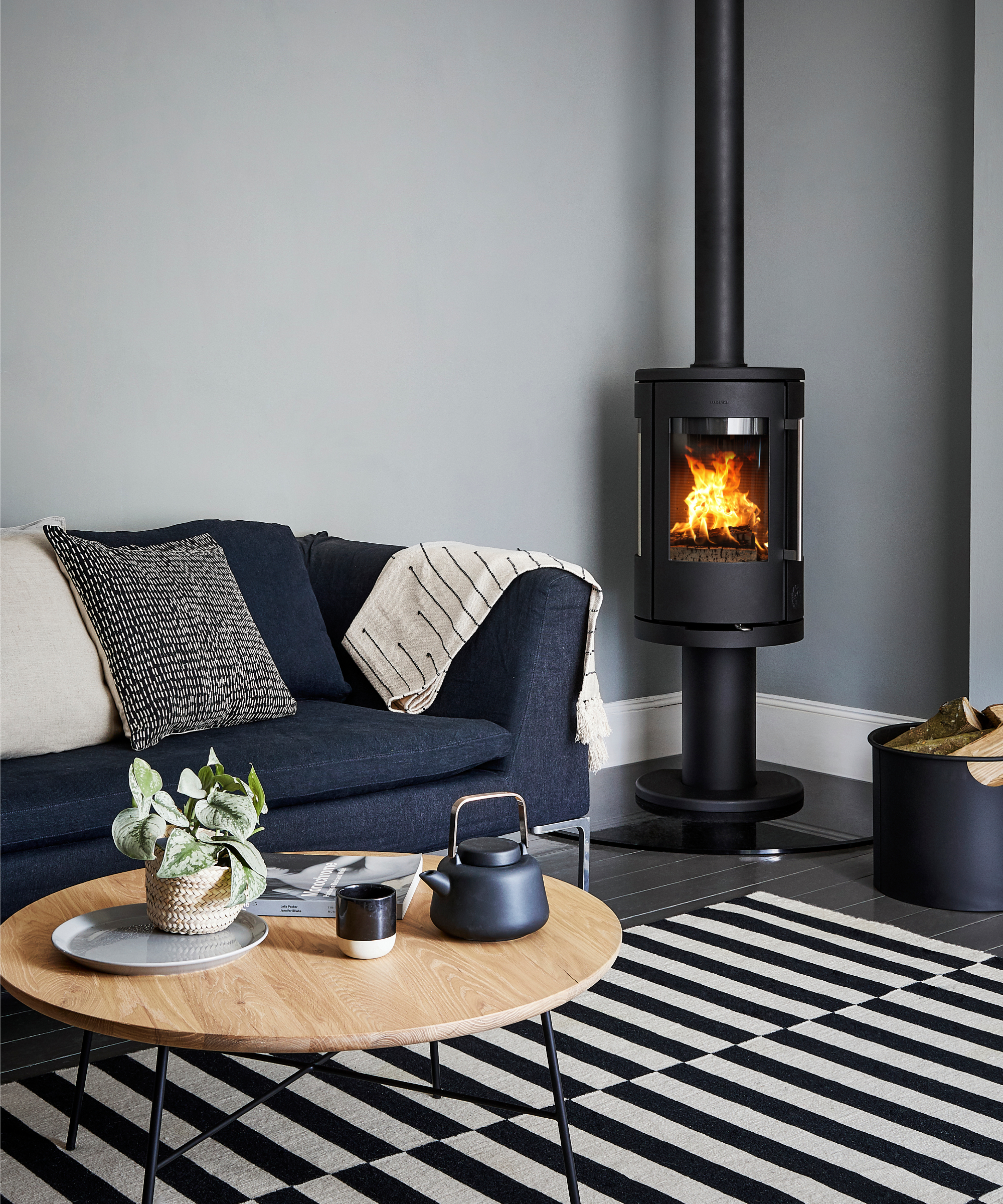
Suitable fuel for log burning stoves
Flue vs chimney
With fuel guidelines established, the next practical consideration to take into account is flue vs chimney as one or the other will be required when installing a log burner. Whether you have an existing chimney, or are adding a new flue, there are specific Building Regulations for chimneys, stoves and fireplaces you will have to adhere to.
Making sure your chimney is in good working order is particularly critical in older home renovations, where wear and tear may mean you need to undertake some repair work before it's deemed suitable for a log burner.
And while you can still have a log burner without a chimney, "you'll need to establish whether your property is suitable for installing a flue system," says Erica Malkin.
If you do need to add a flue, "the likelihood is that you won’t need planning permission," says Jon Butterworth, managing director of Arada Stoves. "However this will vary from household to household.
"Specific regulations to consider, include where the external flue is situated compared to other properties, if your home is a listed building or in a designated area, if your area has specific regulations for wood burners, where your external flue is compared to a road etc," advises Jon. "In many cases, planning permission won’t be required but always speak to a professional before carrying out any work.”
And, in all homes, you'll also need to consider log burner ventilation requirements to ensure you meet the necessary building regulations for installing a log burner.
To make sure you get it right, Erica recommends starting your enquiries with a registered SIA retail group member who will be happy to guide you through the whole process. Most will offer a no obligation quote outlining all the work involved.
"This will likely include a survey of the chimney condition and to assess what’s needed and will usually cover the cost of the appliance, the cost of the chimney liner or flue system, the installation and commissioning of the appliance and flue, installing a hearth if required and any remedial work, such as plastering," explains Erica.
Details of members in your area can be found here.
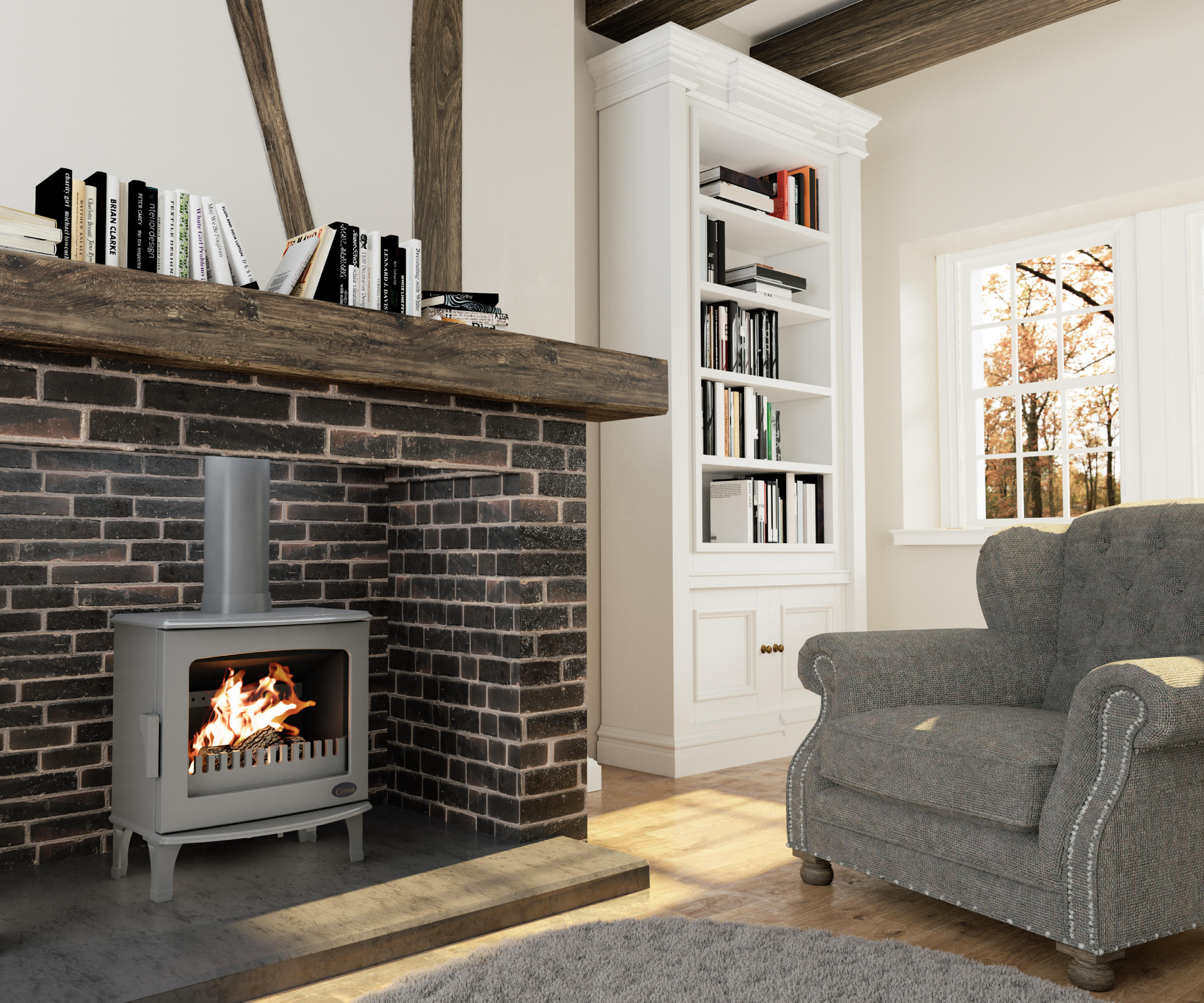

Jon Butterworth is Managing Director of Arada Stoves, one of the UK's leading suppliers of log burning stoves and has a wealth of experience in supplying and installing them.
Calculating the size of your log burner
Before installing a log burner you also need to make sure you've chosen the right size. When asking what size log burner do I need, "you need to consider both the physical size of your stove, as well as the heat output it offers to ensure the room is heated efficiently," says Jon Butterworth.
"This will differ depending on the size of the room, how well insulated it is, if you have double glazing, if you have carpet or wood floors – and so on. For example, if you have a well-insulated room with central heating, carpet and double glazing, a 5kW stove should be sufficient," says Jon. "However, in older, draughty homes with single-glazing and wood floors, you may need a 7kW stove.”
So while you may have fallen in love with a particular freestanding log burner idea, it's important not to get too carried away before checking the essentials. “Before purchasing a stove, you should always verify the heat requirement for its intended location," confirms Declan Kingsley-Walsh, managing director of Morsø UK.
"Buying the wrong size stove will prove problematic due to over or under-usage of the appliance, which is potentially more damaging to the stove, flue and the environment in the long run.
"A convector stove will improve heat delivery to secondary rooms compared to a radiant appliance, for example," he adds. "Ultimately though, it depends on the set-up of your home, and how many rooms you want to heat as well as their respective size."

Declan Kingsley-Walsh has been the Managing Director at Morsø UK and Ireland for over nine years. Known for his meticulous attention to detail, Declan places a high value on maintaining the quality and craftsmanship that define Morsø's offerings.
Who should install your log burner?
With strict regulations surrounding the purchasing and installing of log burners, Erica Malkin tells us the SIA always recommends having your stove and flue fitted by an installer that is registered with a recognised solid fuel competent person scheme such as HETAS or OFTEC.
"They will ensure all regulations are complied with," she explains. "Alternatively, if you do not use such an installer, it is still possible to obtain sign-off from Building Control.
"However a registered installer will provide you with a certificate of compliance that shows that the installation complies with the relevant Building Regulations. The certificate provides a record of your installation, and in England and Wales it is used to notify your Local Authority that the work has taken place.
"The information may also be needed for home insurance purposes and will be required should you sell your property in the future," she adds.
Installing your log burner in the right place
If you're wondering where the best place is for installing a log burner, "the good news is there are very few instances where it’s not possible to install a log burner," says Erica Malkin. However, there are a few requirements to take into account depending on if you will be using an existing chimney or installing a new flue.
If the location of your log burning stove is dictated by a chimney, you need to remember that "the minimum chimney height recommended for wood burning and multi fuel appliances is 4.5 m from the top of the appliance to the top of the chimney," says Jon Butterworth.
For log burning stove installations requiring a new flue, there are a few things to consider that will primarily come down to safety and your aesthetic preferences.
"Think about where the flue will exit the building and whether you want it to run internally as an extended feature of the stove, or on the outside of the building," says Jon. "Depending on your room's architectural structure, there are many part options available including various lengths, bends, supports and flashings to connect your stove to a safe termination point (the place at which the flue exits the building's structure)."
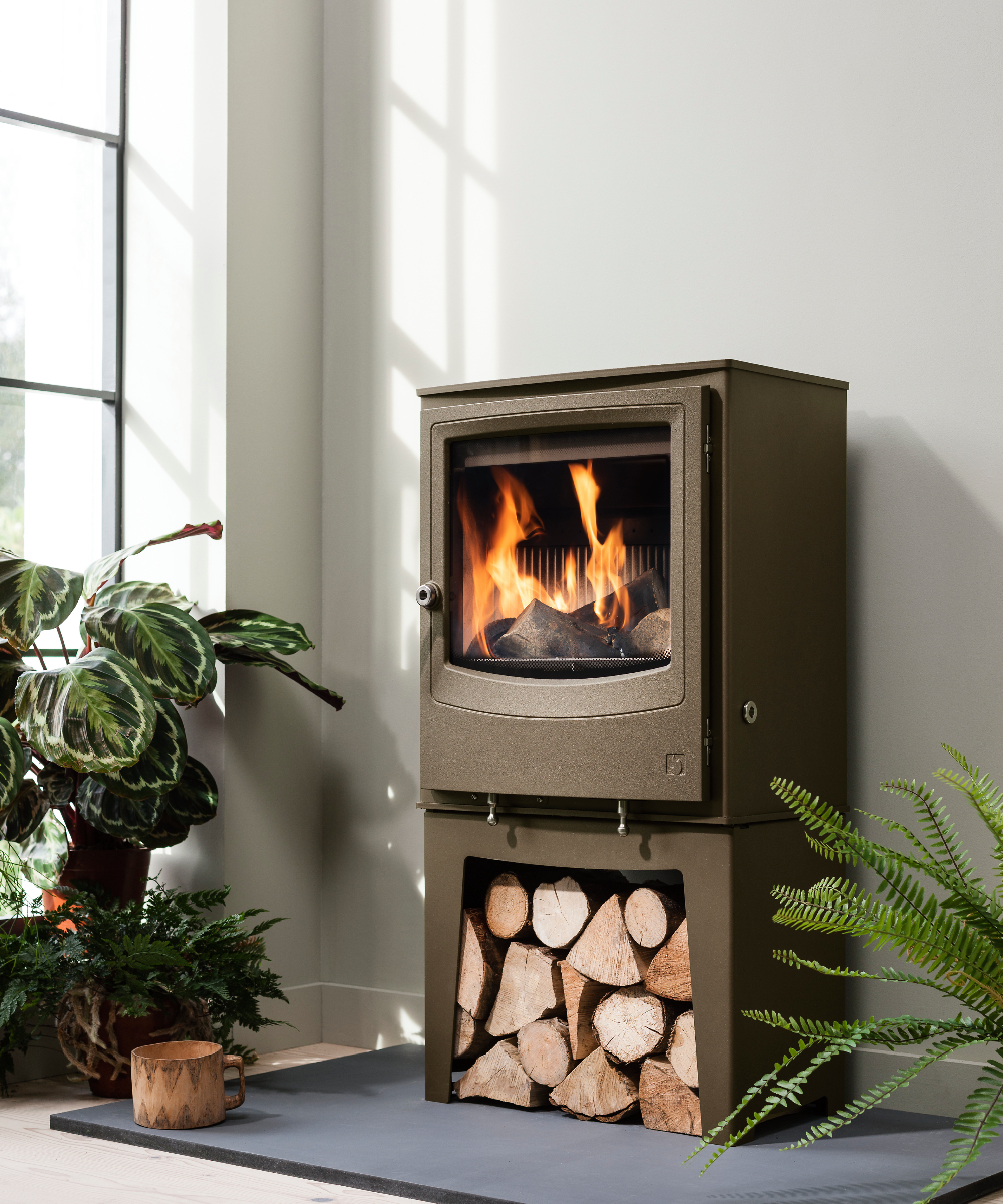
Choosing the style and design of your log burner
With such a wide variety of log burning stoves now available, you may be spoilt for choice when it comes to selecting which one to install in your home.
"A good starting point can be checking out those models within the clearSkies scheme," says Erica Malkin. "This is a certification scheme that independently verifies a stoves Ecodesign and Defra exemption credentials.
However, from corner log burner ideas to double-sided log burner ideas, there will be a wealth of options available to you when installing a log burner. Declan Kinglsey-Smith offers some advice based on his years of experience working within the field which is don't be too fixed on necessarily matching the style of your log burner to the age of your home.
"It very much comes down to personal choice," says Declan. "Contemporary stoves can complement open-plan, larger and minimalistic spaces, and more traditional models will suit cosier, country-style homes," he says. "However, contemporary styles can sometimes bring a pared-back, Scandinavian aesthetic to a more traditional home, and a traditional model can also bring warmth and soften a more modern space. It's really down to the individual’s preference and what will help heat your home most efficiently.”
FAQs
What are the benefits of installing a log burner?
As well as being the perfect addition to cosy living room ideas or even for including in your bedroom ideas, there are other benefits to installing a log burner, says Declan Kingsley-Smith.
"Adding an additional heat source to your property will certainly cut down on your heating bills and some properties are able to only use wood burning stoves to warm their homes."
They can also be a good addition to rooms where you don't have an existing heat source such as conservatories. Find out if log burners in conservatories could be the solution you need.
What budget do I need for installing a log burner?
We've prepared a comprehensive guide to log burning stove installation costs, as the final amount you need to budget will come down to whether you're installing one using an existing chimney or require a new flue.
Once you've installed your log burner, you'll want to make sure it functions efficiently and lasts. To increase its performance, we recommend investing in the best stove fan which will help to distribute heat more quickly. Knowing how to clean log burner glass will also improve its efficiency and give you the best view of those crackling flames.

Sarah is Homebuilding & Renovating’s Assistant Editor and joined the team in 2024. An established homes and interiors writer, Sarah has renovated and extended a number of properties, including a listing building and renovation project that featured on Grand Designs. Although she said she would never buy a listed property again, she has recently purchased a Grade II listed apartment. As it had already been professionally renovated, she has instead set her sights on tackling some changes to improve the building’s energy efficiency, as well as adding some personal touches to the interior.
